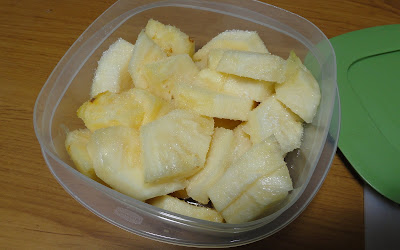We say a lot about respect when we use the full measure of what we grow or buy. In the old days it was common practice to use every part of a slain animal; and many people who slaughter their own livestock still do it today. From the horns being broken down and used as a fertiliser, or filled with cow dung and buried to produce the magical biodynamic Formula 500, to using bones for stocks and gelatine, and the meat, including the offal, for nutrition and the hide for warmth. Crafters do a similar thing with patchwork. They don't waste any scraps and by taking the time to piece the fabrics together, either randomly or in time honoured patterns, they produce beautiful quilts, bags and clothing that are sometimes featured on the walls of galleries, but always yield their true qualities of warmth and comfort.
Respect is expressed in those actions of honouring the life of the animal or the work involved to grow the cotton and produce the fabric, by using every part for a worthwhile purpose and by making sure there is no waste to pollute or be part of a landfill dump.
We can carry those principles on very easily when we use our fruit and vegetables too. Again, they can be either grown at home or purchased, the respect for the work and resources involved in producing what you have before you is clear and unambiguous if you use every part of what you have. Take our pineapple, for instance. That pineapple was grown from the top of a local pineapple we bought a few years ago and it will continue on because I will plant this top to grow two more pineapples.

Growing pineapples is simple, it takes a long time, but you will be rewarded for you patience when you taste that sweet juicy organic fruit. I sliced ours down the middle and cut it into chunks. We've feasted on it twice now after our tea and we will finish it off tonight. It is so sweet! When I tasted it I forgot about those years of growing and thought only that we grew it, it was organic and we used every part of it - no waste, everything was used. So how do we get to that point?

Take the top from your pineapple - if you have a choice, use the best pineapple - the juiciest and the sweetest. You will be passing on those genes to your next fruit. Remove all flesh from the base of the top, then peel off several layers of leaves. You want a cutting that is clean and undamaged at the base. Allow it to dry out for a few days, then plant it in the garden in a sunny spot where it can grow for at least two years. Don't put it where you plan on planting tomatoes next season. If you live in a colder climate, I believe you can plant pineapple tops in large pots, at least the size of a bucket, filled with good quality potting mix. Keep the top in the sun for as long as possible, then move inside to a sunny window during the cold weather. Pineapples don't need a lot of water but you'll need to water it in well and water every couple of days for about two or three weeks until the roots start reaching out into the soil.


We didn't fertilise our pineapple much. It got some liquid fertiliser occasionally and natural rainfall, otherwise it was sat quietly doing its own thing. They do take up a fair bit of space when the top has fully developed so if you're planting a number of tops, make sure you give them a metre / three feet space in which to develop. When it's been in a year or so, you'll notice a tiny pineapple emerge from the centre. That slowly develops for about six to nine months and ripens to a perfect fruit. It is ready to pick when, instead of standing upright, it falls over while still attached to the centre. Cut the pineapple stalk off the main plant and leave the plant in the ground. Fertilise with liquid fertiliser and continue as before - this same plant will produce a second pineapple and will take the same amount of time doing it.
When you harvest your pineapple, cut the top off and replant. Eat the fruit and make the skin and the off cuts into pineapple vinegar. I've written about that here. Wonderful! No waste at all. You've used the entire fruit and that one top will continue producing pineapples for as long as you continue to plant the tops.
Respectful. Economical. Productive.
